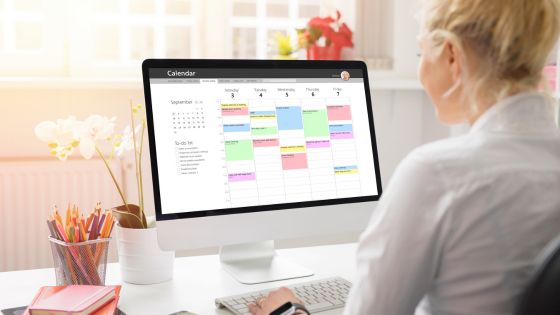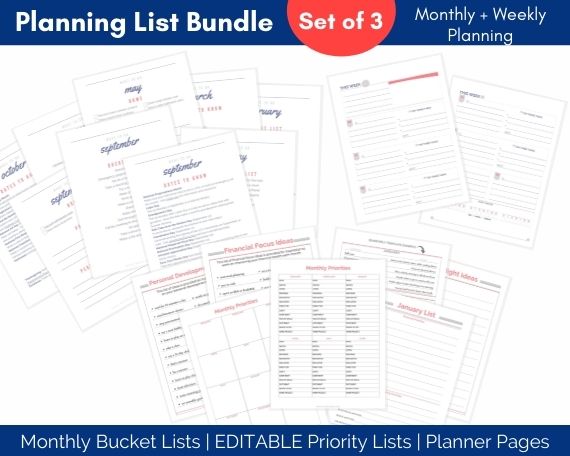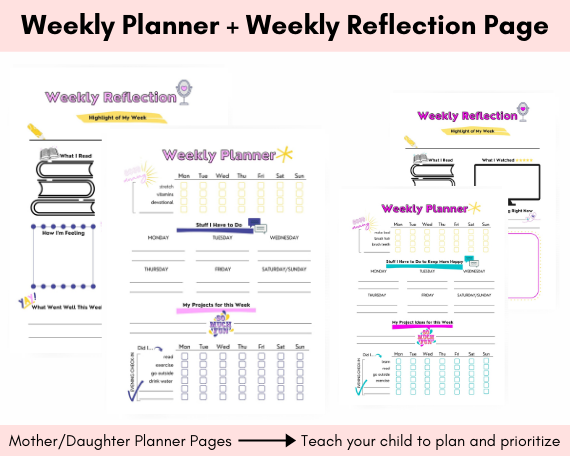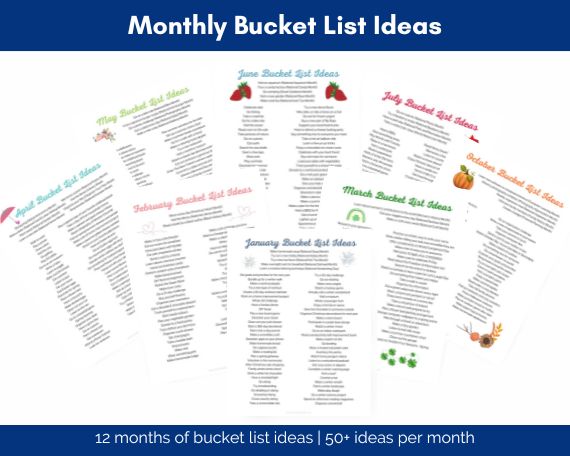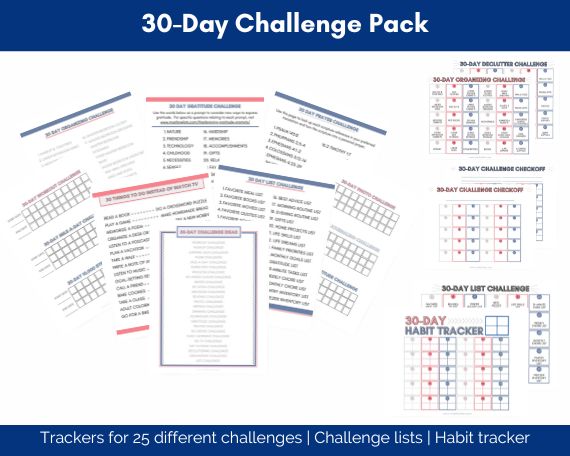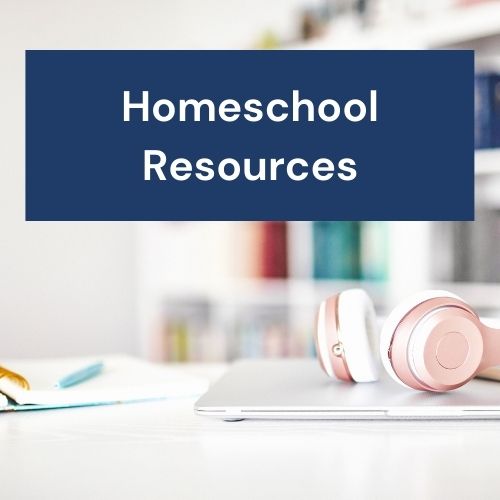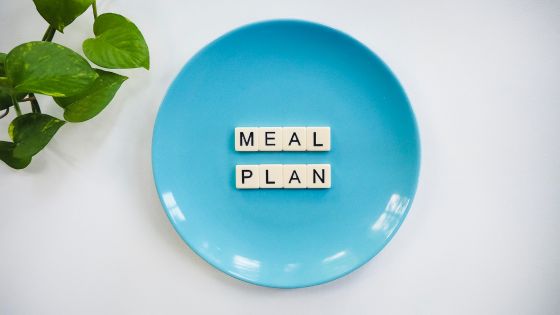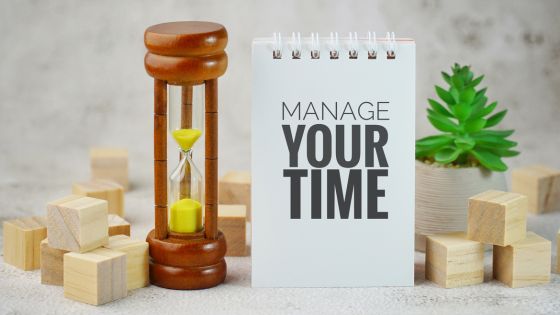How to Use a Calendar to Organize Your Life
Whether you’re a work-at-home, stay-at-home, or all-day-at-the-office mom, there are a few systems you need to manage your time and responsibilities efficiently. One of those essential systems is a calendar system. Here’s your busy mom’s guide to managing your time effectively with a calendar system.
I use the word system for a reason. Here’s the dictionary definition of system.
system (noun): a set of principles or procedures according to which something is done; an organized framework or method
The way you use a calendar should be done within an organized framework, using simple procedures to make life easier for yourself.
However, there is no one-size-fits-all here, so the good news is that you get to choose exactly what works for you. The kind-of bad news is that it may take a little trial and error to find a calendar system you stick with and use daily. Let me tell you it is worth the effort.
This article is part of a Busy Mom’s Guide series. Follow the links below to read other articles in this series.
3 Systems You Need to Manage Your Time: A Busy Mom’s Guide
How to Manage Your Time Effectively: A Busy Mom’s Guide to Information Overload
How to Manage Your Time Effectively: A Busy Mom’s Guide to Meal Planning

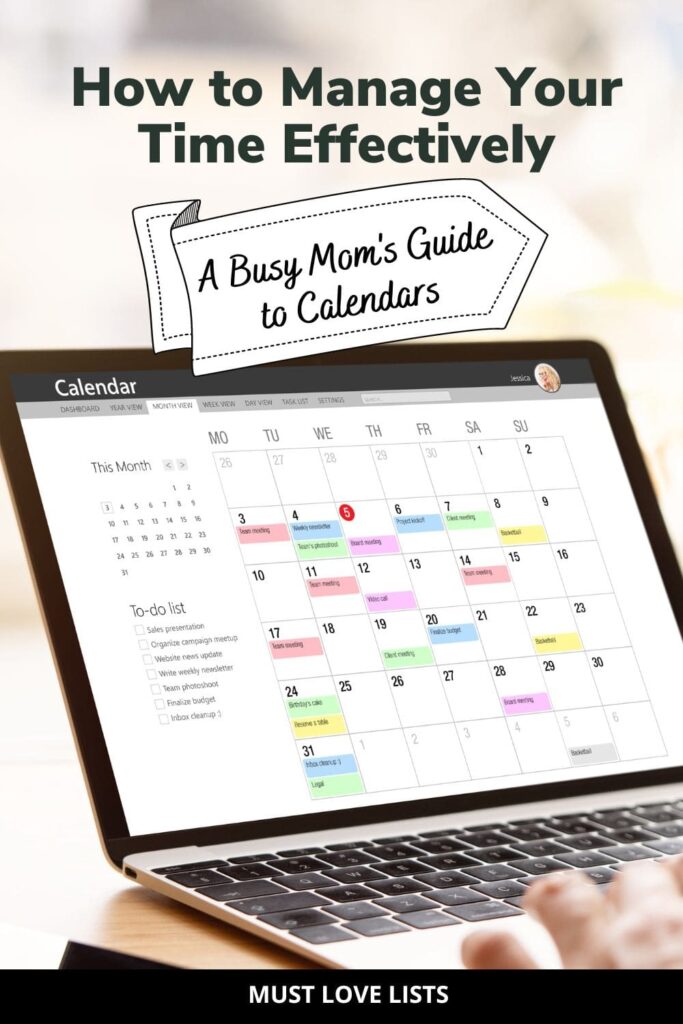
Using a Calendar Productively
To really gain the benefit of a calendar system you must first choose the type of calendar system to use. Then, you need to create routines of updating and checking your calendar regularly.
We’ll talk about paper calendars, digital calendars, sharing calendars, and using calendars on a daily, weekly, and monthly basis.
(Disclosure: As an Amazon Associate I earn from qualifying purchases. This means that if you click a link and make a purchase, I may receive a small commission at no additional cost to you. I only recommend products I use and love or would love to use! For full disclosure details, click here.)
Paper Calendars and Planners
Whether you prefer to use paper or digital as you main calendar system, a physical calendar is a helpful tool. And if you do love your paper planner, you can make it work as your main calendar. Just be aware that you will need to find a way to keep other members of your family in the loop about your schedule.
Wall Calendars
A wall calendar can be a workable calendar system for busy moms. Displayed in a communal location, the entire family has access to view it. Plus, there are many options for wall calendars that allow individual schedules to be recorded.
Although I use an online calendar system, I like to have a wall calendar so that I can quickly see our upcoming schedule. The NeuYear and the Bliss calendars below are examples of this type of year-at-a-glance wall calendar.
Awesome Large Wall Calendar – Sunday First – Paper Surface
Mom’s Family Wall Calendar 2024
Bliss Collections Large Wall Calendar – 20×30 – Perpetual Calendar
Planners
Planners are a little more robust calendar system as compared to a wall calendar. With a paper planner, you can add time-block details for every day of the week, as well as additional notes and information. Most planners include both monthly layout pages and daily or weekly layout pages.
There are a few disadvantages to paper planners when compared to digital options. First, there’s no recurring button or copy and paste feature. You must write every appointment, event, and activity in by hand. Second, it is not able to be shared with other family members, like a spouse, the way a digital calendar is.
Other Physical Calendar Options
There are a few other paper options besides wall calendars and planners. Desk calendars generally offer a large-scale monthly view with perforated pull-off sheets.
There are also a variety of magnetic calendar options intended to be put on a fridge and accessed by the whole family.
While these types of calendars serve a purpose, they are not the most effective way of managing your schedule. I recommend using these calendars only as a supplement to a digital calendar system, or very diligent use of a paper planner.

Digital Calendars
Let’s move on to digital calendars. This category would include digital planners, calendar apps, and web-based calendars. Digital calendars allow for greater shareability, portability, and flexibility than paper calendars. They can also get complicated and overwhelming so if you’re just starting out with a calendar system, start simple. You can add complexity as you need it.
Digital Planners
Digital planners are a bit of a hybrid between paper and online calendar systems. They are accessed on a device that can read PDFs, but allow for writing with a stylus pen. This type of calendar system can be overwhelming if you’re just trying to figure out how to stay consistent with using a calendar, but if you’re comfortable with calendars and planners, a digital planner offers almost endless options for configuration.
Digital planners are most commonly used in conjunction with a note-taking app like GoodNotes, Notability, or Noteshelf and often used on an iPad or tablet.
The planner is typically set up to look like a paper planner, with hyperlinks connecting various sections and pages so you can easily navigate to wherever you want to “turn” in the planner.
Check out this helpful list of the best digital planners if you’re interested in exploring this option.
Calendar Apps
This is the type of digital calendar most people are familiar with. The big players include Google calendar, Apple calendar, and Outlook.
In addition, there are a myriad of apps like DigiCal (Android) and Fantastical (Apple) that offer a lot of customizable features designed to help you stay on top of your busy life.
The Cozi Family Organizer is a popular digital calendar app with a fairly intuitive interface.
Again, if you’re feeling disorganized and overwhelmed, stick with something simple and free at first. Google calendar is my personal favorite. It’s easy to use, syncs with other software, can be used on multiple devices, and it’s free!
Read: How I Use Google Calendars to Organize Everything
Shared Calendars
As I mentioned before, one advantage to digital calendars is their shareability. If you can get your spouse on board with adding events to your shared calendar and checking the calendar before making plans, you’ll see a huge benefit in managing your family’s schedule.
Most digital calendars allow you to share with either view-only permission, or give permission to edit and make changes to the calendar.
If your kids are old enough to access your digital calendar, give them view-only permission so they can see your family’s schedule. Get them used to checking the calendar before they ask to have friends over or say yes to an invitation.
Setting Up Routines for Using Your Calendar
The most important part of your calendar system is…making it a habit.
Add All Time-Sensitive Events
Some people choose to use their calendar as a task list, but it can be overwhelming to try and fit every item from your to-do list on your calendar. You may also find that it’s not worth the time it takes to continually move tasks around if they aren’t completed at the specifically assigned time.
Instead, make sure you add all time-sensitive appointments and events as soon as you are able. Utilize the calendar app on your phone to add items when you are away from your computer.
Set up recurring events for activities you do repeatedly—kids’ activities, classes, volunteer commitments, or church activities.
Take time at the beginning of each new season (school year, new year, summer) to add everything you have scheduled to your calendar. Summer camps, vacations, school holidays, and anything else you know of in advance.
Review Your Calendar Daily
It does no good to add your work schedule, after-school activities, and dental appointments six months in advance if you never check your calendar!
Get in the habit of checking your calendar first thing in the morning and again in the evening.
At first, you may need to set a reminder on your phone to remind you to check your calendar, but eventually it will become a habit.
The evening check is helpful to scan ahead and be prepared for whatever is coming up the following day. And the morning calendar scan keeps your schedule fresh in your brain.
When you check your calendar, look at least a few days ahead. I like to scan the upcoming two weeks for anything that needs action. A birthday means I need to buy a gift or order a cake. Certain meetings may require prep work to be completed in advance. Make it a habit to scan at least a week ahead so you have a basic knowledge of your scheduled events.

Daily and Weekly Calendar Layouts
When you buy a physical planner, you should consider whether you prefer to use a daily calendar view or a weekly calendar view. This is purely personal preference, but you’ll want to make sure the planner contains page layouts that feel intuitive for you.
On a digital calendar, you can quickly switch between a variety of views—yet another advantage of the digital format.
Using a Daily Calendar Layout
If your days are packed with meetings and appointments, requiring you to stick to a precise schedule, a daily calendar layout will be important for you. You’ll want to keep your calendar in a daily layout most of the time so that you can see what’s coming up hour by hour.
Using a Weekly Calendar Layout
For busy moms who don’t have a lot of time-specific appointments and meetings, viewing your calendar in a weekly layout is probably more helpful. This layout provides less daily detail, but allows for a quick scan of your week with just a glance.
Combining Multiple Calendar Views
One thing I love about using Google calendar is the ability to maintain multiple calendars and turn them on and off simply by clicking a checkbox. I wrote a separate article doing a deep dive into how I use Google calendar, including a calendar for meal planning, one for fun holidays, and another for “maybe” events.
This feature makes it possible to keep separate calendars for each family member and view them all together or separately, along with whatever personal calendars you wish to display.
How to Use a Calendar System Effectively
The number one reason calendars don’t help you manage your time more effectively is that you aren’t checking the calendar daily.
The steps for using a calendar for time management are simple:
- Choose a calendar system: physical or digital
- Add all time-sensitive events consistently
- Review your calendar morning and evening, looking ahead at least a few days
If you pick a calendar system, consistently add your commitments to your calendar, and make it a habit to review your calendar daily, you will save time and emotional energy. And what mom doesn’t want that!?
Visit my homeschool resources page for monthly unit study ideas, projects, and homeschool planning help!


